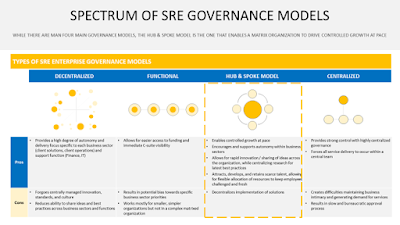1) ComposableArchiteture
Composable Applications allow polyglot microservices-based packaged-business capabilities (PBCs) or software-defined business objects. PBCs — for example representing a patient or digital twin — create reusable modules that the IT-Business fusion teams can self-assemble to rapidly create applications, reducing time to market. Champion composable architectural principles in all new technology initiatives, including application modernization, new engineering, and the selection of new vendor services. Buy standard PBCs on application marketplaces and integrate using APIs. According to Gartner, by 2024, the design mantra for new SaaS and custom applications will be “composable API-first or API-only,” rendering traditional SaaS and custom applications as “legacy.”
2) Data Fabric/ Data Platform
The value of data has never been more valuable. But often, data remains siloed within applications, so it’s not being used as effectively as possible. Data fabric integrates data across platforms and users, making data available everywhere it’s needed.
Within inbuilt analytics reading metadata, the data fabric is able to learn what data is being used. Its real value exists in its ability to make recommendations for more, different, and better data, reducing data management by up to 70%.
Identify priority areas to introduce data fabric solutions by using metadata analytics to determine current data utilization patterns for ongoing business operations. Prioritize areas with significant drift between actual and modeled data.
3) Cybersecurity Mesh
Using a cybersecurity mesh approach, you can integrate multiple data feeds from distinct security products to better identify and respond more quickly to incidents. Digital business assets are distributed across cloud and data centers. Traditional, fragmented security approaches focused on enterprise perimeters leave organizations open to breaches.
A cybersecurity mesh architecture provides a composable approach to security based on identity to create a scalable and interoperable service. The standard integrated structure secures all assets, regardless of location, to enable a security approach that extends across the foundation of IT services.
4) Privacy-Enhancing Computation
The real value of data exists not in simply having it, but in how it’s used for AI models, analytics, and insight. Privacy-enhancing computation (PEC) approaches allow data to be shared across ecosystems, creating value but preserving privacy. Approaches vary, but including encrypting, splitting, or preprocessing sensitive data to allow it to be handled without compromising confidentiality is the art of PEC. PEC platform uses homomorphic encryption so users can conduct data searches against its extremely sensitive data, with both the search and the results being encrypted
Investigate key use cases within the organization and the wider ecosystem where a need exists to use personal data in untrusted environments or for analytics and business intelligence purposes, both internally and externally. Prioritize investments in applicable PEC techniques to gain an early competitive advantage.
5) Cloud-Native Platforms
According to Gartner, By 2025, cloud-native platforms will serve as the foundation for more than 95% of new digital initiatives — up from less than 40% in 2021.
Lift-and-shift cloud migrations focus on taking legacy workloads and placing them in the cloud. Because these workloads weren't designed for the cloud, they require a lot of maintenance and don't take advantage of any of the benefits.
Cloud-native platforms use the core elasticity and scalability of cloud computing to deliver faster time to value. They reduce dependencies on infrastructure, freeing up time to focus on application functionality instead.
Typical use cases are to build a cloud-native platform to create a portfolio of new digital services. For example, a bank can reduce the time to open an account to 5 minutes and add instant digital payments when using a well-architected technology platform. Deployment microservices architecture enables the integration of services such as savings, virtual debit card, and credit card services, allowing the system to easily scale to over 3.5 million transactions in two months.
6) AI/ML/Metaverse/ AR/ VR/Computer Vision
Distributed enterprise is a virtual-first, remote-first architectural approach to digitize consumer touchpoints and build out experiences to support products. While AI engineering is the discipline of operationalizing AI models, using integrated data and model and development pipelines to deliver consistent business value from AI, the use of NFT/blockchain-based metaverse builds on Web 3.0 principles to enable 'play to earn' gaming, AR/VR enabled retail e-commerce, real estate, hospitality, corporate training, induction on manufacturing shopfloors to aircraft engine simulations has seen a major boost in government and private investment.








